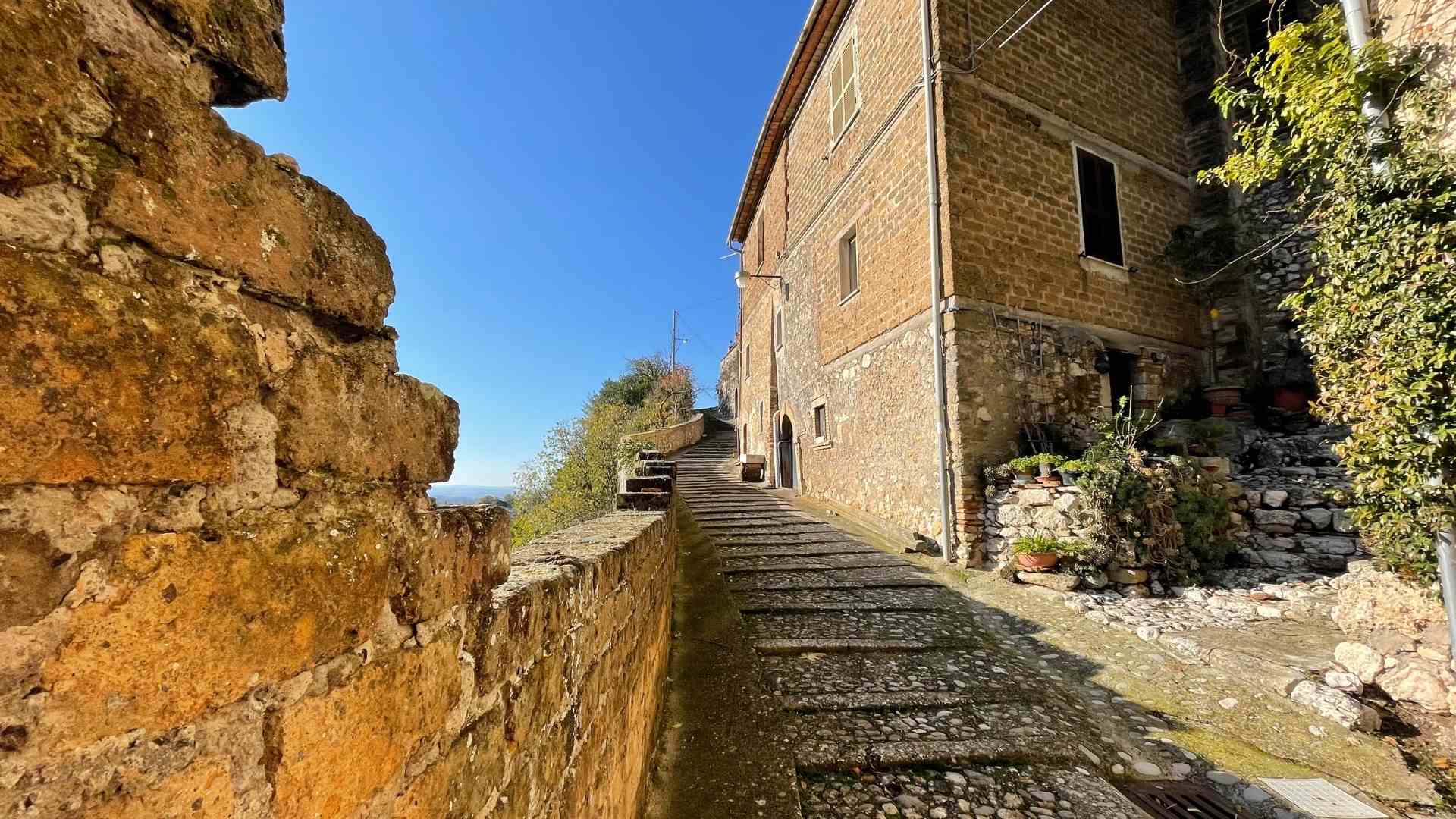
punto di interesse
point of interest


Porta da Piedi, and the Church of San Valentino which overlooked it until 1944 when it was destroyed, was the entrance from the lower of the hill, to the castle of Calvi dell’Umbria.
Today there is less of this structure with an arch which, placed just over the Via degli Orti, gave access to the cobbled narrow street which we now call Via Roma.

Porta da Piedi, and the Church of San Valentino which overlooked it until 1944 when it was destroyed, was the entrance from the lower of the hill, to the castle of Calvi dell’Umbria.
Today there is less of this structure with an arch which, placed just over the Via degli Orti, gave access to the cobbled narrow street which we now call Via Roma.

The Church of San Valentino was one of the four parishes of Calvi dell’Umbria . Placed in an elevated position in comparison the narrow street and the door which gave access to the town , was part of it.
The stories of the XVI century describe it as ancient and rich in relics.
Was abandoned at the end of the XIX century and then , rendered unsafe by German mines, destroyed in the half of the last century.
At the height of the door today there is a plaque devoted to one of the most brave womens of Calvi dell’Umbria: Maria Ceccobelli.
Following the tradition, at the time when Calvi contended in Poggio di Otricoli the borders of the mountain which overlooked it, the boundaries arrived in front of the Church of San Pancrazio and took possession of the red banner during the celebration of the Patron.
In the turmoil that followed, it was Maria Ceccobelli to steal the drape hiding it in her lap. Along the way, stopped by armed Poggiani said that he brought home roses and, at the act of showing the contents of the dress, miraculously the banner turned into those flowers.
From that moment and after, the banners dedicated to the Saint became four: one for every of the four parishes, but the red one, which every year is taken in procession on the mountain dedicated to the Patron, is the symbol of the possession of the mountain by Calvi.

The Church of San Valentino was one of the four parishes of Calvi dell’Umbria . Placed in an elevated position in comparison the narrow street and the door which gave access to the town , was part of it.
The stories of the XVI century describe it as ancient and rich in relics.
Was abandoned at the end of the XIX century and then , rendered unsafe by German mines, destroyed in the half of the last century.
At the height of the door today there is a plaque devoted to one of the most brave womens of Calvi dell’Umbria: Maria Ceccobelli.
Following the tradition, at the time when Calvi contended in Poggio di Otricoli the borders of the mountain which overlooked it, the boundaries arrived in front of the Church of San Pancrazio and took possession of the red banner during the celebration of the Patron.
In the turmoil that followed, it was Maria Ceccobelli to steal the drape hiding it in her lap. Along the way, stopped by armed Poggiani said that he brought home roses and, at the act of showing the contents of the dress, miraculously the banner turned into those flowers.
From that moment and after, the banners dedicated to the Saint became four: one for every of the four parishes, but the red one, which every year is taken in procession on the mountain dedicated to the Patron, is the symbol of the possession of the mountain by Calvi.

Continue the tour inside the old town:
Go back to visit the Church of SS. Trinità
Or discover the points of interest of Calvi and of its territory:
discover all the points of interest of the village
Information, appointments and travel proposals on:
The Progressive Web App is part of the project “Le Terre dei Borghi Verdi”, realized in collaboration and with the contribution of Regione Umbria – Assessorato al Turismo
©2021 Le Terre dei Borghi Verdi
Le Terre dei Borghi Verdi
Welcome in Southern Umbria,
where the slowness becomes value
Information, appointments and travel proposals on:
The Progressive Web App is part of the project “Le Terre dei Borghi Verdi”, realized in collaboration and with the contribution of Regione Umbria – Assessorato al Turismo
©2021 Le Terre dei Borghi Verdi